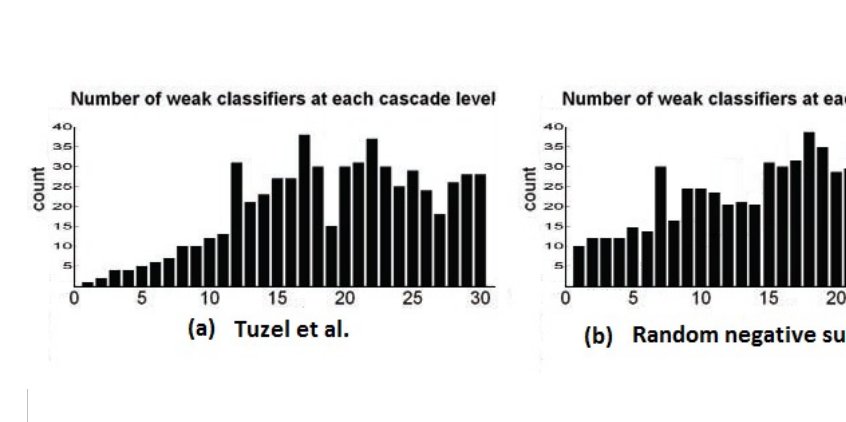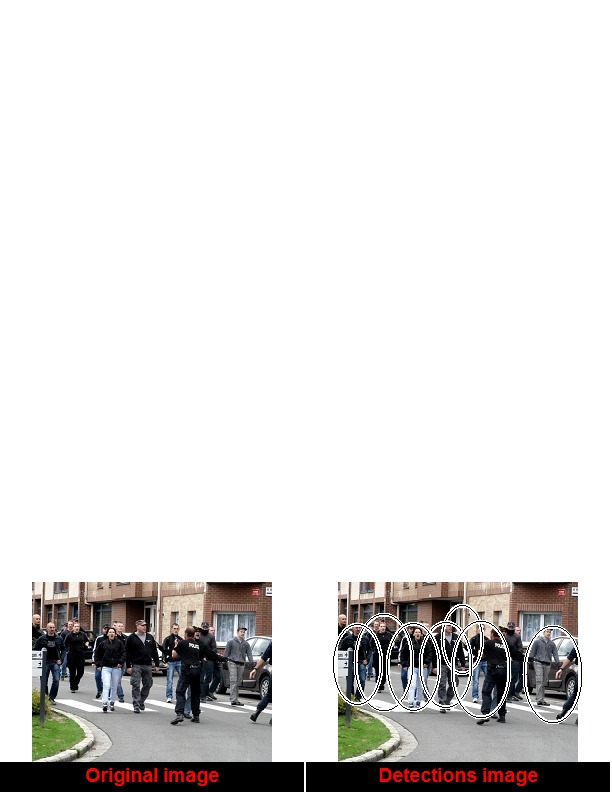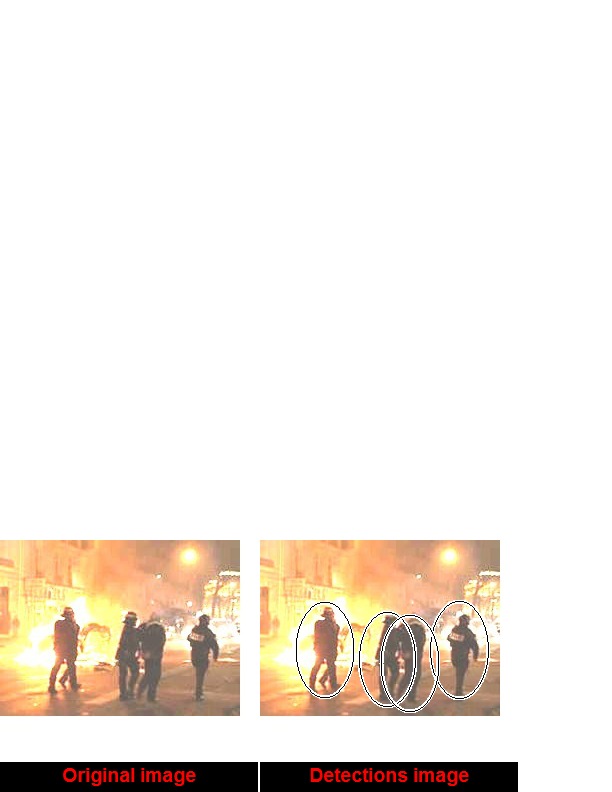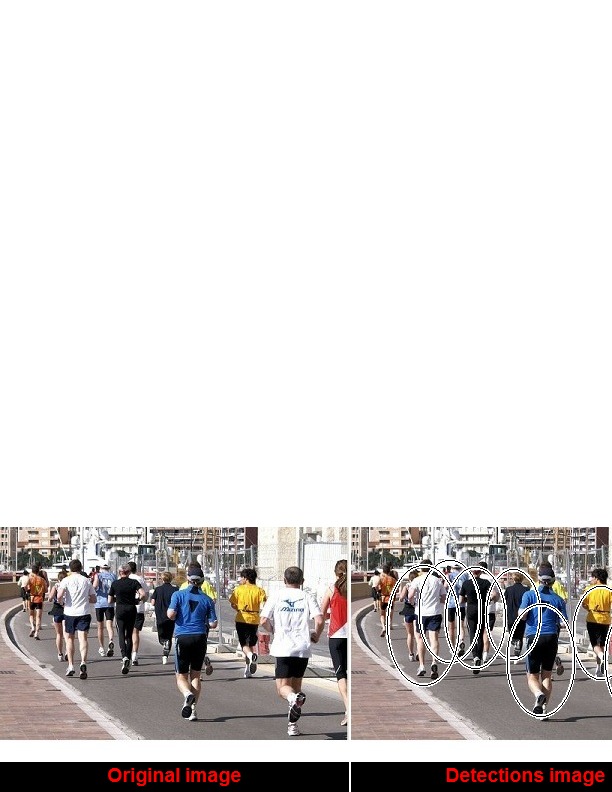Section: New Results
Optimized Cascade of Classifiers for People Detection Using Covariance Features
Participants : Malik Souded, François Brémond.
keywords: People detection, Covariance descriptor, LogitBoost.
We propose a new method to optimize a state of the art approach for people detection, which is based on classification on Riemannian manifolds using covariance matrices in a boosting scheme. Our approach makes training and detection faster while maintaining equivalent or better performances. This optimisation is achieved by clustering negative samples before training, providing a smaller number of cascade levels and less weak classifiers in most levels in comparison with the original approach.
Our approach is based on Tuzel et al. [86] work which was improved by Yao et al. [87] . We keep the same scheme to achieve our people detector: train a cascade of classifiers based on covariance descriptors, using a Logitboost training algorithm which was modified by Tuzel et al. to deal with the Riemannian manifolds metrics and using the operators which were presented in [75] . In fact, Covariance matrices do not belong to vector space but to the Riemannian manifold of (d x d) symmetric positive definite matrices. The trained cascade of classifiers is applied for detection after training.
We propose an additional step to speed up training and detection process. We propose to apply a clustering step on negative training dataset before training the classifiers. This clustering step is performed both in Riemannian manifold and in the vector space of mapped covariance matrices, using the operators and metrics previously cited.
The idea consists in regrouping all similar negative samples, with regard to their covariance information, into decreasing size clusters. Each classifier of the cascade is trained on one cluster, specializing this classifier for a given kind of covariance information, and then, speeding up the training step and providing shorter classifier, which accelerate its response when applied on image. In the same time, the specialization of each cascade classifier shortens the cascade too, speeding up the detection (see Figure 18 and Figure 19 ).
A paper describing this approach has been accepted in VISAPP 2013 conference [50] .






